QuestionWe have 2 redfoot tortoises that are approximately 6-8 weeks old. I had a few questions because I want to make sure these little guys grow to big and strong and are with us and our children for many many years to come.
First, we have a Sun Pro UVB and UVA light above our indoor enclosure it's a 160 Watt bulb but it seems to only keep the enclosure at a 75 - 80 temp. We purchase a under the tank warmer and placed it under their dome that they sleep in is this acceptable? Do we need something more? I don't want my new children to freeze or do anything that would cause them not to live long lives.
Second, we are feeding them Zoo Med Tropical Turtle Chow, Clovers from our yard and some fruits. How often do we feed them and is this an acceptable diet? I read they like to eat pinkies do you recommend this?
Third question, would a clear plastic rubbermaid shoe box make a good cover for them to sleep under? They are very small now and I know as they grow I will need something bigger, but for now is this good?
Last, we are using a Cypress Mulch the pet store recommended. I don't really like it because it seems to stick to their faces to much, but I have read this is a very good for them. Is that true? Also what type of Humidifier would you buy and do you just let it sit on the bottom of their enclosure?
Sorry for all the questions. But your help is greatly appreciated.
AnswerPull up a chair, Andrea, this could take a while. I can see that your heart is in the right place and you are trying hard, but you may be trying too hard.
Of course, there is a lot of confusing info about this species as well- we've kept them for a long time but only recently has anyone done any real research on them.
1. LIGHTING/HEAT: The only 'sun pro' bulbs I can find info on are tanning bulbs or aquatic bulbs, so I have no idea if they are emitting the right amount of the critical 260nm rays or not. You do not need special UVA bulbs- UVA is automatically emitted by all UVB bulbs.
Red-foots, ESPECIALLY young Red-foots do not need a lot of UVB- it is not a case of more is better, it is a case where more causes eye damage, cancer, skin problems, etc. Again- this may not be a concern here, but I don;t know since I cannot find specs.
I also cannot tell if the bulb is supposed to put out heat. Not all UV bulbs are also heat bulbs- in fact, only a few brands are. 160 watts of power is a LOT of light (in fact, I would call it too bright for young tortoises) but still not a lot of heat by itself.
Under tank warmers should only make the soil gently warm to the touch. Lay your hand on the soil and leave it there- if it gets at all hot, it is too hot for the tortoises.
Without knowing what you are keeping them in, I don't know what to recommend, but my little ones were kept in a large Rubbermaid tub with a small ZooMed Reptisun 5.0 lamp for UVB and lighting (set on a 12 hour timer), and a ceramic heat emitter set with a separate thermostat to keep the warm sleeping end at about 85F.
As the animals get bigger, they get more space, and more light. The year-old and bigger torts are in a large tortoise table with a plant light on a 12 hour timer, and a PowerSun UVB bulb for most of the heat and light on a 8 hour timer. A small ceramic heat emitter is used on cold nights to keep the sleeping area at about 75 overnight.
2. DIET: Are you talking about the Zoo Med Natural Forest Tortoise Food? It is OK but too expensive to use as a main diet. Red-foots and similar species do not need a lot of fruit or meat, but they can handle more of it in the diet than 'grassland' species can.
Try offering some sort of leaves most of the time- dandelions, mulberry leaves, most edible yard plant leaves and flowers, most kinds of store-bought lettuces and greens (especially arugula/rocket, Endive, Escarole, and turnip and collard greens). They want variety, but you can do that by buying 2 small bunches of different greens each week, and two different kinds the next week, etc.
Spinach is a debated plant, as are Iceberg lettuce, Romaine lettuce, kale, cabbage, etc. Most experienced keepers who have done the research say that these are OK as a part of a varied diet.
There are several fresh grasses and hays that are good, but it can be tough to get torts to eat them- Timothy, orchard grass, etc.
Besides greens and edible flowers, you can offer some fruit. They don't need much but a fruity meal a week or so is a nice change of pace. Good options are all tropical fruits (although bananas are quite sugary for them), melons, dark plums, strawberries, and pineapple. Occasional naval oranges, apples, peaches, etc. are OK. Some other good fruits are things we usually count as veggies, but are really fruits since they have seeds- bell pepper, squash, pumpkin, etc.
There are some other veggies we can offer for even more variety- sprouts, broccoli, cauliflower, shredded carrot, etc.
As for meat or protein, they can tolerate some, but we usually don't worry about this much until they are about 6 months old, and then we can look at worms, bugs, pinkies, cooked chicken, eggs, and more.
How much/how often? Young torts need an incredibly small amount of calories a day- at 6 months old, they really only need about 20ish calories a day. It is tough for us to offer that little food- we tend to pile it on. There are some tricks to keeping it that low-
- offer a very small pile a day
- remove uneaten food after 15 minutes
- skip days (not generally recommended with young torts)
- offer a very small pile of nutritious food, then a bigger pile of gut-filling low-nutrient food, like Iceberg lettuce later on.
3. HIDES: That will be fine, although you may want to look into a 'humid hide'- put the lid on the shoebox, fill it half-way with loose, fluffy moss, and hang a sponge or similar on the wall. Park it in a warm area and it will be warm, snug, and humid in there for them.
4. Cypress is OK. For young torts, I prefer long-fibered sphagnum moss that has been teased out and dampened. Not too wet, or the plastron (bottom shell) will rot.
5. Humidifier- I only use one in the tortoise room. Smaller spaces can be humidified by a combination of heat and moisture. Misting the tortoises completely twice a day will make a BIG difference.
For more help, try:
- http://www.turtletary.com The owner has a simple process that works well for him. Not everyone agrees with every detail, but it is a great start.
- http://www.tortoiseforum.org is a place to chat with other keepers and discuss ideas.
- http://www.tortoisetrust.org is a good general place for torts

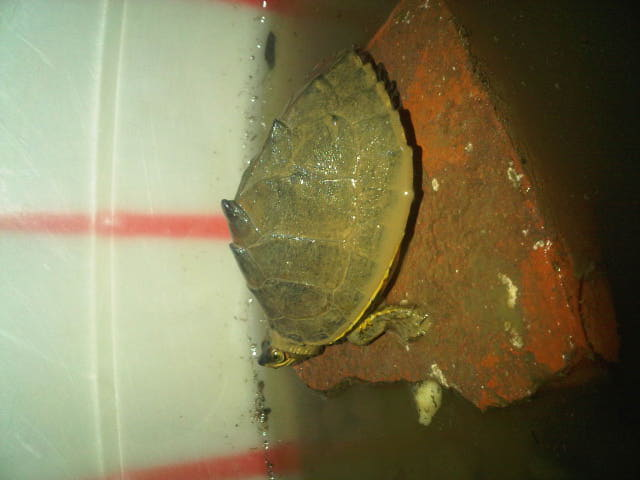 q.
Question
Sir I want to know about this t
q.
Question
Sir I want to know about this t
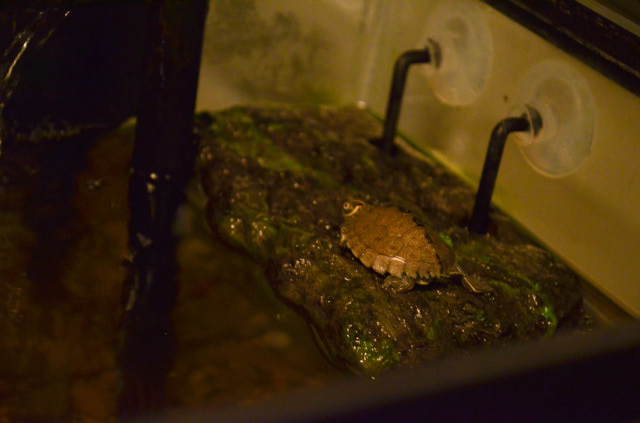 baby RES is lethargic
Question
Baby, "Harry Potter" Malfoy &n
baby RES is lethargic
Question
Baby, "Harry Potter" Malfoy &n
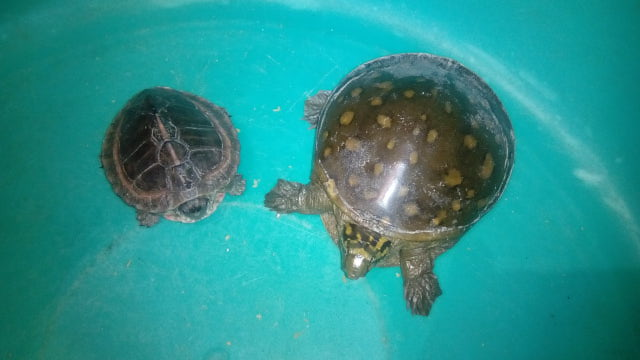 Tortoise Food
Question
Tortoise Tortoise
Plz tell me ! W
Tortoise Food
Question
Tortoise Tortoise
Plz tell me ! W
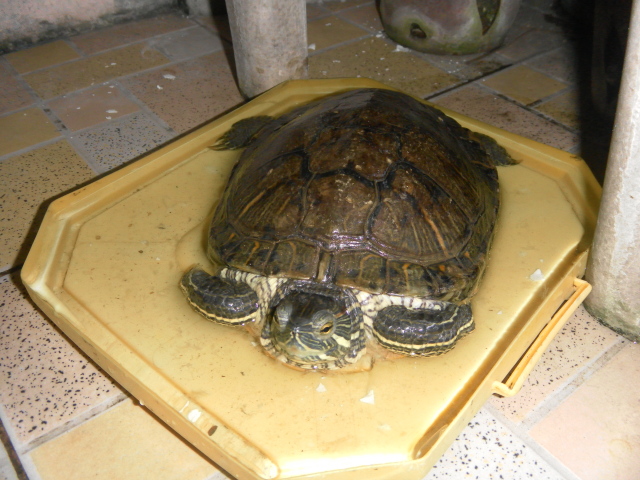 another pic
Question
obese
heres another pic of my pet
AnswerHey
another pic
Question
obese
heres another pic of my pet
AnswerHey
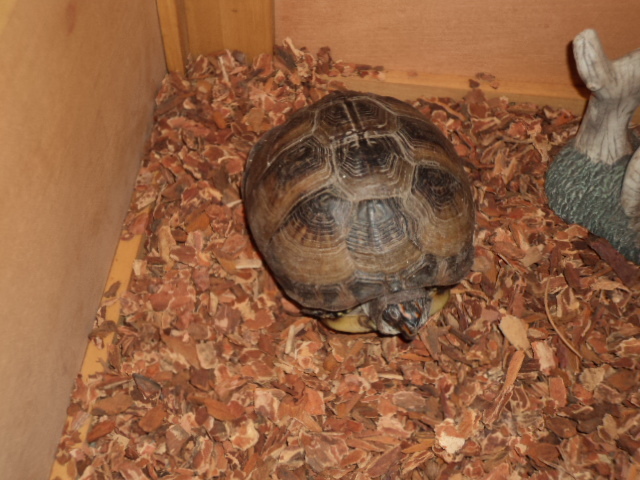 Is this a red ear box turtle?
QuestionWhat kind is this?
QUESTION: dear Jeanni
Is this a red ear box turtle?
QuestionWhat kind is this?
QUESTION: dear Jeanni